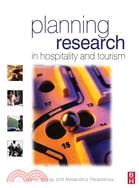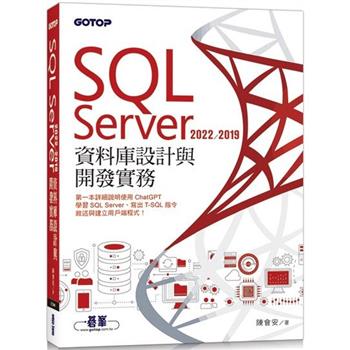| FindBook |
|
有 1 項符合
alexandros paraskevas levent altinay的圖書 |
 |
$ 1696 | Planning Research in Hospitality & Tourism
作者:Alexandros Paraskevas Levent Altinay 出版社:Routledge 出版日期:2007-11-30 規格: / 264頁  看圖書介紹 看圖書介紹
|
|
|
- 圖書簡介
Planning Research in Hospitality and Tourism provides a concise and clear approach to planning research projects which are a necessity in most hospitality and tourism courses taught at degree level. The text considers the particular characteristics of the hospitality and tourism industry, whilst providing a balanced approach toward both quantitative and qualitative methods of research. The text also carefully considers the international aspect of the industry and the people it employees, which supports the books aims of:* Providing an excellent understanding of the basic principles of conducting research, in a straight forward “no nonsense” guide* Carefully considering the particular characteristics of the hospitality and tourism sectors in relation to embarking on a research project in the area* Including in each chapter an “International Dimension” section, as well as case studies, questions and reflections on the research process
- 目次
Chapter 1 - Getting Started 1.1. What is Research and Why Do We Do It?1.2. Why Do You Need to Do Research At All? 1.3. How Does a Research Project Start? 1.4. Formulating the Broad Research Question 1.5. The Role of the Supervisor 1.6. The International Dimension of the Researcher 1.7. Chapter Summary 1.8. Student Experiences 1.9. Reflective Exercise: Your Preferred Approach to Research 1.10. Review Questions 1.11. Chapter References Chapter 2 - Developing Academic Reading Skills 2.1. Why Academic Reading? 2.2. How Do you Know you Have a Paper Worth Reading? 2.3. Reading the Paper 2.4. Extracting Value from Your Reading 2.5. SQ3R: A Technique for Effective Academic Reading 2.6. Academic Reading from an International Student Perspective 2.7. Chapter Summary 2.8. Reading Exercise 2.9. Review Questions 2.10. Chapter References Chapter 3 - Developing Literature Review Skills 3.1. Locating the sources of your literature 3.2. Defining the initial parameters of search 3.3. Conducting the main search and filtering the results 3.4. Organising your Results 3.5. Referencing your Sources 3.6. Articulating the research aim 3.7. The International Dimension of Literature Review 3.8. Chapter Summary 3.9. Student Experiences 3.10. Exercise on Literature Maps 3.11. Academic Journals in Hospitality and Tourism 3.12. Review Questions 3.13. Chapter References Chapter 4 -Research Philosophies, Approaches and Strategies 4.1. Research Philosophies: Positivism and Phenomenology 4.2. Research Approaches: Deduction and Induction 4.3. Quantitative versus Qualitative Research 4.4. Research Strategies Case Study Grounded Theory Ethnography Action Research Survey Research Experiment 4.5. International Dimension in Choosing a Methodology 4.6. Chapter Summary 4.7. Exercise on research philosophies, approaches and strategies 4.8. Review Questions 4.9. Chapter References Chapter 5 - Sampling 5.1. What is Sampling?5.2. Probability Sampling 5.3. Non-Probability Sampling 5.4. Sample size 5.5. The problem of non-response5.6. Sampling in qualitative research 5.7. Chapter Summary 5.8. Review questions 5.9. Chapter References Chapter 6 - Data Collection Techniques 6.1. Interviews 6.2. Observation 6.3. Questionnaires 6.4. Content Analysis of Documents 6.5. Increasing the Credibility of your Research6.6. Chapter Summary 6.7. Examples of Studies in Hospitality and Tourism Using Different Data Collection Techniques 6.8. Review Questions 6.9. Chapter References Chapter 7 - Writing Your Research Proposal 7.1. Section One of your proposal 7.2. Section Two of your proposal 7.3. Section Three of your proposal 7.4. Closing your proposal - The Appendix section 7.5. Chapter Summary 7.6. Student experiences 7.7. Review questions 7.8. Chapter References Chapter 8 - Conducting the Fieldwork 8.1. Negotiating Access to Organisations 8.2. Professional Conduct in Interview Settings 8.3. The International Dimension 8.4. Student Experiences 8.5. Review Questions 8.6. Chapter References Chapter 9 - Analysis of Qualitative Data 9.1 Qualitative Data 9.2. Different Approaches to Qualitative Data Analysis 9.3. Using Computer-Assisted Qualitative Data Analysis Software (CAQDAS) 9.4. International Dimension: Language and ‘Language Equivalence’ 9.5. Chapter Summary 9.6. Review Questions 9.7 Extended Example of Inductive Analysis 9.8. Chapter References Chapter 10: Quantitative Data Analysis 10.1. Scales in Quantitative Analysis Nominal Scale Ordinal (ranked) Scale Interval Scale Ratio Scale 10.2. Organisation, Coding and Entering Data for Analysis 10.3. Analysing Quantitative Data Cross-Tabulation Chi-Square Test Pearson Correlation Test T-Test ANOVA (Analysis of Variance) Multiple Regression Analysis 10.4. Chapter Summary 10.5. Review Questions 10.6. Exercises in Quantitative Statistical Analysis 10.7. Chapter References Chapter 11 - Writing Up the Dissertation 11.1. Cover Page, Abstract, Acknowledgements and Contents 11.2. The Introduction Chapter 11.3. The Literature Review Chapters 11.4. The Research Design Chapter 11.5. Presenting and Discussing Your Findings 11.6. The Conclusions and Implications 11.7. The Last Chapter: Introduction Revisited 11.8. The Final Touches 11.9. Other Presentation Conventions 11.10. Review Questions 11.11. Turning a Dissertation into an Academic Paper 11.12. Chapter References
|











